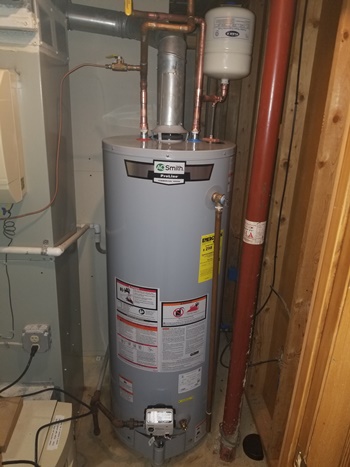Each person will have their own unique way of thinking with regards to How to Maintain Your Water Heater & Prolong its Life.

Warm water is vital for day-to-day convenience, whether it's for a refreshing shower or cleaning meals. To guarantee your hot water system runs efficiently and lasts much longer, regular upkeep is key. This write-up offers functional tips and insights on just how to preserve your home's hot water system to stay clear of disturbances and costly fixings.
Introduction
Maintaining your home's hot water system could seem overwhelming, yet with a few basic steps, you can guarantee it runs smoothly for several years to come. This guide covers every little thing from comprehending your warm water system to DIY maintenance pointers and recognizing when to call specialist aid.
Value of Preserving Your Warm Water System
Routine maintenance not only expands the life-span of your hot water system but likewise ensures it runs successfully. Disregarding upkeep can cause lowered performance, greater power bills, and even premature failure of the system.
Signs Your Hot Water System Needs Maintenance
Recognizing when your hot water system requires focus can avoid significant issues. Keep an eye out for indications such as inconsistent water temperature, weird sounds from the heating unit, or rusty water.
Understanding Your Warm Water System
Before diving into upkeep tasks, it's valuable to comprehend the fundamental elements of your hot water system. Generally, this includes the hot water heater itself, pipelines, anode poles, and temperature level controls.
Month-to-month Maintenance Tasks
Regular monthly checks can help catch minor problems prior to they intensify.
Purging the Hot Water Heater
Purging your hot water heater gets rid of debris build-up, enhancing performance and lengthening its life.
Checking and Replacing Anode Rods
Anode poles protect against corrosion inside the tank. Examining and changing them when broken is crucial.
Examining and Changing Temperature Level Setups
Readjusting the temperature settings makes sure ideal performance and security.
DIY Tips for Upkeep
You can do numerous upkeep tasks on your own to maintain your hot water system in top problem.
Checking for Leaks
On a regular basis inspect pipes and links for leakages, as these can lead to water damage and higher costs.
Examining Pressure Relief Valves
Testing the pressure safety valve guarantees it operates correctly and avoids too much stress buildup.
Insulating Pipelines
Protecting warm water pipelines lowers heat loss and can save power.
When to Call a Professional
While DIY upkeep is beneficial, some issues need specialist knowledge.
Facility Concerns Requiring Professional Assistance
Instances include major leakages, electric problems, or if your water heater is constantly underperforming.
Regular Professional Maintenance Perks
Specialist maintenance can include extensive assessments, tune-ups, and making certain conformity with safety requirements.
Final thought
Normal upkeep of your home's hot water system is important for effectiveness, durability, and expense savings. By complying with these pointers and recognizing when to look for professional help, you can guarantee a reputable supply of hot water without unforeseen interruptions.
How to Maintain an Instant Hot Water Heater
Before tinkering with your hot water heater, make sure that it’s not powered on. You also have to turn off the main circuit breaker and shut off the main gas line to prevent accidents. Also turn off the water valves connected to your unit to prevent water from flowing into and out of the appliance. 2. When you’re done, you have to detach the purge valves’ caps. These look like the letter “T” and are situated on either side of the water valves. Doing so will release any pressure that has accumulated inside the valves while at the same time avoid hot water from shooting out and burning your skin. 3. When the purge valves’ caps are removed, you have to connect your hosing lines to the valves. Your unit should have come with three hoses but if it didn’t, you can purchase these things from any hardware or home repair shops. You can also get them from retail stores that sell water heating systems. Read the user’s manual and follow it to complete this task properly. When the hosing lines are connected, open the purge port’s valves. 4. You should never use harsh chemical cleaners or solutions when cleaning your unit. Make use of white vinegar instead. It should be undiluted and you’ll probably use about 2 gallons. 5. Now flush your water heater. This task should probably take about 40 minutes. We can’t give you specific directions for this because the procedure is carried out depending on the type, model and brand of your heater. With that being said, refer to the user’s manual. 6. When you’re done draining the unit, you have to turn off the purge port valves again. Remove the hosing lines that you earlier installed on each of the water valves. Put the valve caps (purge port) back in their respective places and be very careful so as not to damage the rubber discs that are found inside these caps. 7. Now that everything’s back in place, check your user’s manual again to find out how to reactivate your water heating system. 8. Once it is working, turn one of your hot water faucets on just to let air pass through the heater’s water supply pipes. Leave the tap on until water flows smoothly out of it. https://www.orrplumbing.com/blog/2014/september/how-to-maintain-an-instant-hot-water-heater/

Do you appreciate more info about How to Maintain a Hot Water Heater in a Few Simple Steps? Place a review down the page. We would be delighted to know your responses about this review. We hope that you visit us again later on. If you please take a moment to promote this content if you appreciated it. Thanks so much for taking the time to read it.
Quote & Schedule